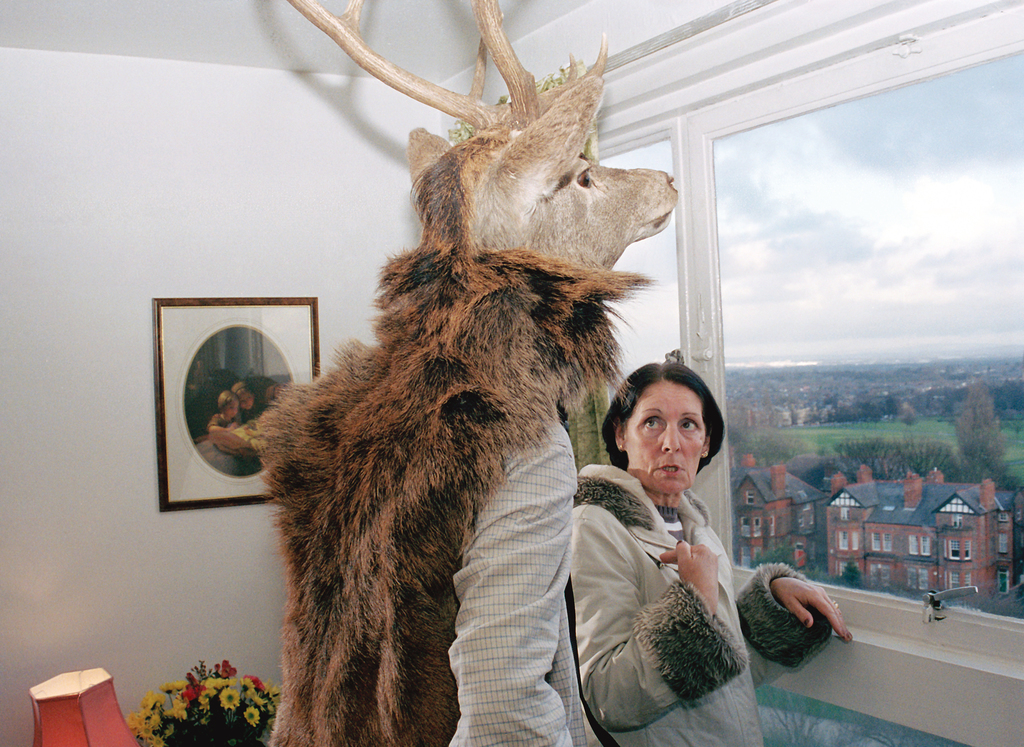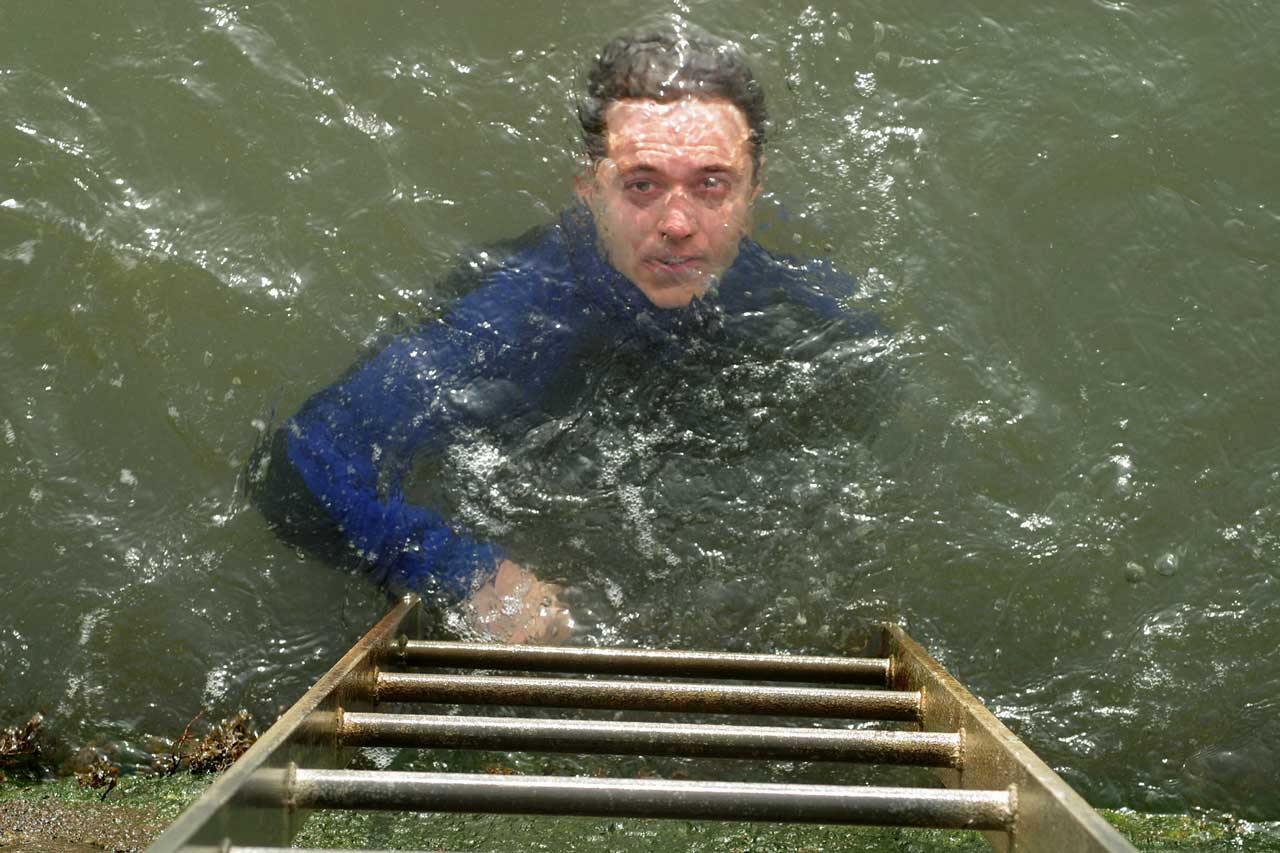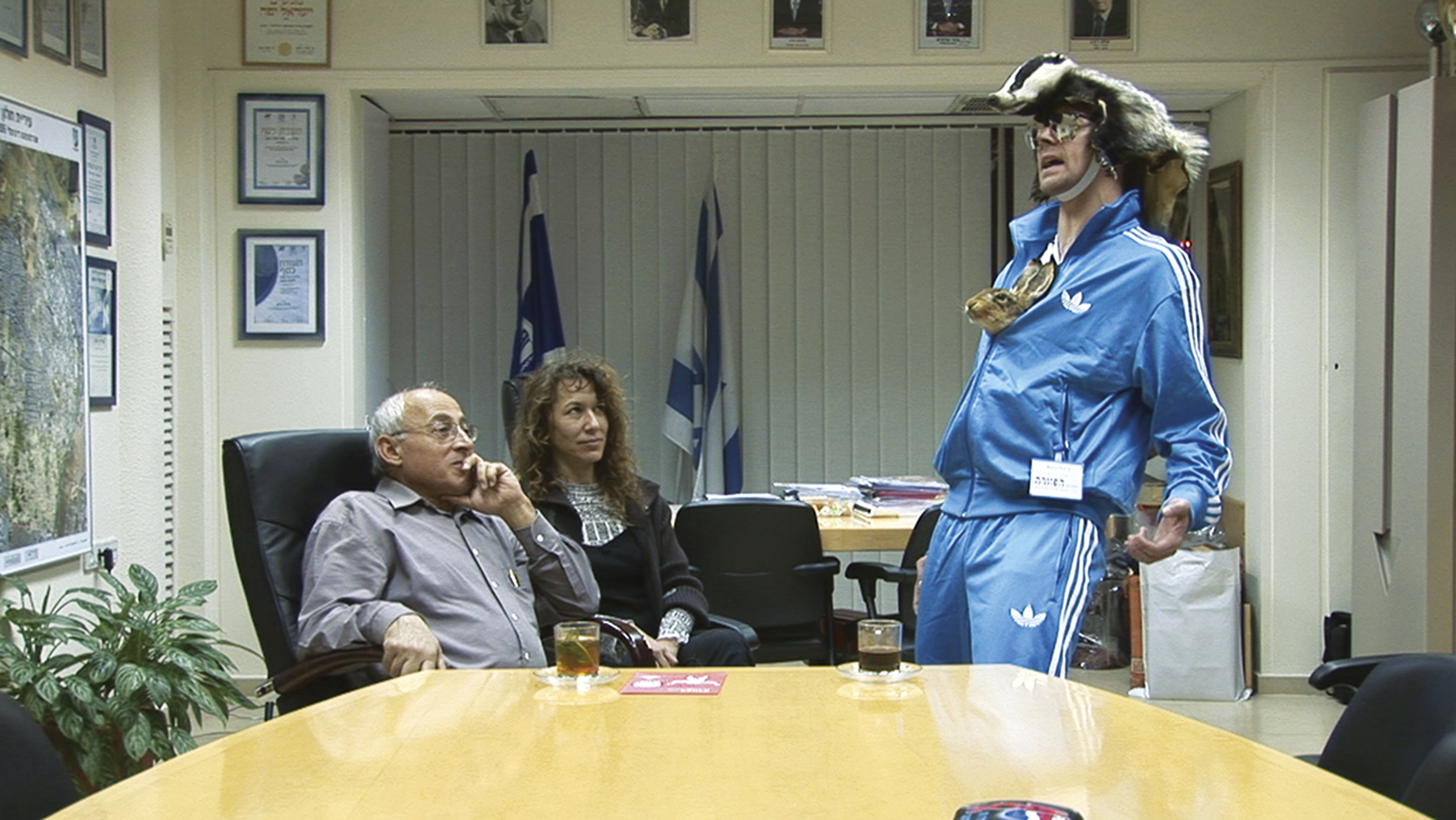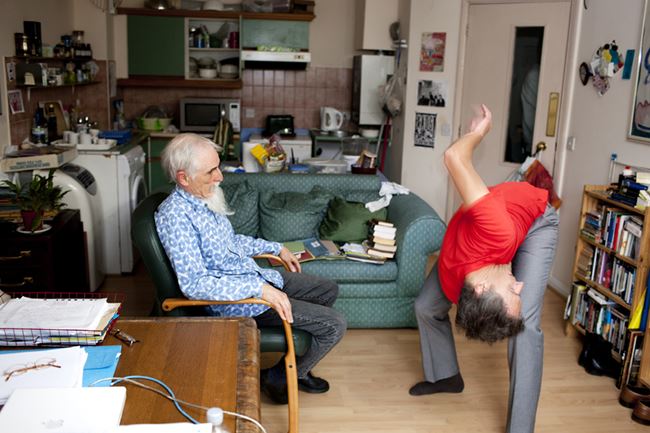Marcus Coates
In the beginning, that is in mythical times, man lived at peace with the animals and understood their speech. It was not until after a primordial catastrophe comparable to the fall of biblical tradition. That man became what he is today, mortal, sexed, obliged to work to feed himself and at enmity with the animals while preparing for his ecstasy and during it, the shaman abolishes the present human condition, and for the time being, recovers the situation as it was in the beginning. Friendship with animals knowledge of their language transformation into an animal are so many signs that the shaman has reestablished the paradise or situation lost at the dawn of time.
–Mircea Eliade: Shamanism: Archaic Techniques of Ecstasy
I first encountered the work of Marcus Coates in Liverpool in 2010 via his piece ‘Journey to the Lower World’ which was then being exhibited at the Walker gallery as a new acquisition. I was enthralled by the piece and recall feeling both awkward and amused viewing it. Like the participants sitting in the ninth floor flat in the (now demolished) Linosa Close tower block featured in this piece, I looked upon the ritual which Mark Wallinger describes as an “unclassifiable performance” with a mixture of anxiety, suspicion and amusement. Since then, I’ve remained captivated by Coates’ work and the process of communicating with him and organizing this exhibition has convinced me of the importance of his contribution to the contemporary moment.
As most of the pieces in this exhibition at the Belltable Arts Centre evidence, Coates is concerned with exploring the parallels and similarities that exist between human and animal worlds. In addition, there is inherent in these pieces, the presence of a desire to provide viewers with alternative ways of understanding the problems that emerge within society, especially problems of communication. I must confess that I am usually rather critical of artists whose practice is shaped solely by an ambition to solve problems. However, while Coates approaches his work -and indeed his audience- earnestly, he manages to sidestep many of the aspects that are usually most contentious in the work of artists whose practice is rooted in the notion that art can fulfill an objective criteria. As this exhibition emphasizes much of Coates work is concerned with mimicry, and perhaps Coates is even mimicking the role of the socially committed artist. Yet if this is the case, the result is neither patronizing nor sneering. In fact, it is at once profound and entertaining and in many ways, points to the fact that there are many unrealistic expectations regarding what art can really achieve.
This exhibition emerged directly from a residency I participated in at the Centre for Digital Art in Holon, Israel earlier in 2012. Coates had himself traveled to Holon in 2007, having been invited by Galit Eilat, who was then curator at the Centre for Digital Art. She arranged the meeting with the city’s mayor Moti Sasson. The outcome of this meeting is documented in ‘Plovers Wing’ also included in this exhibition. In total, this exhibition features three pieces selected from the archive. In addition to selecting these pieces from the archive, I also invited the artist to propose a more recent piece for inclusion. This piece entitled ‘A Question of Movement’ was produced last year in collaboration with Henry Montez. This piece is distinguished from the others in that it does not reference the animal world but typically it is concerned with communication, in this case on conscious communication, and how this may be achieved through dance and body language. Below is an email conversation which took place between Pádraic E. Moore and Marcus Coates via email in May of 2012.
If it’s alright with you, I’d like to begin at the beginning so that I can try and glean as deep an understanding of your work as is possible. Would you be willing to explain how your practice developed into what it is today? I mean, your work is now so multifaceted and includes photography, sculpture, video and performance. This may seem a redundant question, but is there any medium or method which you feel particularly aligned with?
I think because I started out as a painter all other mediums are a departure, which I feel equally comfortable with. Painting probably is the most difficult for me because I respect it the most and have the strongest association with art making and its history. With other mediums I can make and react and play without the intention of art making crossing my mind. I’ve found this to be the only way I can work as an artist to not set out to make art. Drawing is difficult for me because I spent so much of my art education involved in the craft of this. It’s taken me further away from what I’d imagine it could do for me. I am probably most aligned with performance, because I know nothing of its craft. For me it is a form that is most easily connected to the discipline of switching between non-conscious action and thought, from the imagination to rational thoughts. And this is a discipline I know I’ve been involved with since childhood, when we all gave our realities equal status.
In much of your work you assume the role of a communication conduit or medium who connects the natural kingdom with the realm of humans. In one of Rudolf Steiner’s lectures, he speaks about how in ancient times people were able to commune with nature spirits. Steiner contended that modern societies must renew a relationship with these beings, or humanity will fail to bridge the gulf that separates it from the spiritual world. The conviction was that these nature spirits act as emissaries for higher divine spiritual beings. would yours be a similar position?
I think we have a relationship with beings in this spiritual sense, but it’s no longer associated with nature. It could be said that instead of venerating or communing with animal spirits, we now create our spirits to commune with like brands and celebrity icons. I’m not sure if the spiritual relationship itself has changed because that may in fact be a biological necessity or compulsion, but the focus of that and the explicit purpose of it has. In my work that uses that shamanic tradition as a process I have used my imagined encounters with animals as problem solving archetypes, a self generating world based on my knowledge and experience of nature. It is obvious that our relationship to nature is fundamental to our personal and cultural evolution. I know without it, I am diminished. Gregory Bateson, the biologist and anthropologist said 40 years ago that the source of all our problems today comes from the gap between how we think and how nature works. I think the motivation for much of my work comes from a personal desire to reconcile this gap.
In Finfolk (the earliest of the pieces selected for this exhibition) you assume the role of a mythical Selkie and speak in vocabulary that you devised yourself. This piece in particular is loaded with humour and doesn’t slip into those moments of tension that distinguish some of your other works, such as ‘Journey to the Lower World’ which is also included in this exhibition. This prompts me to ask if this humour is something that you hold important? I asked this because it would seem that this line between comedy and poignancy is one which you often tread.
Pretending to be a seal is ridiculous, believing you are a seal and as such and pretending to be a human is a serious business. I think because I take it seriously it perhaps comes across as humorous and it’s the incongruity of the scenarios I create. They are often extreme because I want to test myself and my processes. And that unlikely situation can be read as comical. Coming out of the North Sea in winter, dressed in a tracksuit and then climbing back in again wasn’t done to get laughs. But I admit in retrospect, there is a silliness to it, which can engage, disarm and unite people which is a powerful tool. I like the ambition and the futility, the earnestness and the ridiculous being in a position of having nothing to lose, that feels very powerful.
There is a revolutionary element to your work and it often captures situations in which there is a momentarily tense or awkward dynamic between you and the people you are in dialogue with. In The Plover’s Wing (The Palestinian/Israel crisis) you are in dialogue with the mayor of Holon through an interpreter. This deals with a very real and explicitly political situation and does so in a manner that is not forced or overbearing. Would you agree that work can be political and indeed polemical, without having to be explicitly so?
I think the way we imagine is political in itself. The limitations of our imagination define our culture, which informs everything we do. It is interesting that by talking about my imagination, and what I have seen there, this is deemed as unreal and as such not a threat, and it can’t be contested or challenged, which allows a freedom and honesty because your opinion is an interpretation of this waking dream. And people create their own interpretations and meanings from that.
It was exactly a century ago that artists like Franz Marc or Marc Chagall were producing works in which an intense preoccupation with animals resulted in a pantheistic approach to painting. Clearly, the context and content is fundamentally different but I’ve wondered if you had an interest in the work of these 20th century artists?
Not so much, maybe because they were presenting animals as symbols. My main interest lies in my experience and encounter with animals and presenting the relevance of that.
In your more recent works it is apparent that in your role as an artist you endeavour to address and indeed solve social problems. However, one of the true qualities of your approach is that you succeed in doing so without being didactic or patronising. You avoid the pitfalls which has blighted so much ‘relational art’ of the last decade, the success of which is often measured by the ability to incite a reaction from an audience. Is this a concern?
My work doesn’t set out to be concerned with art. If I was primarily concerned with creating a relational work, I’d be using the people I’m working with as a vehicle for that artistic inquiry. Because I am not interested in that artistic inquiry but rather a personal relationship with the people I’m working with (and what they are asking of me) my motivation can be clear. The selfish aspect of this is perhaps the self exploration. But there is an appreciation of this from the people I’m working with. Maybe because of the difficulty and perhaps even the skill of this there is an exchange. In fact, I often feel like I’m the one who’s losing out because it’s so physically and emotionally draining. The art is a byproduct of all these experiences.
Another quality in your work that I appreciate very much is the manner in which you succeed in producing works that can only be located in a hinterland of categories or disciplines. They are of course, a manifestation of cultural production, but they clearly bring to bear your rigorous research into the natural world, and also your concern with educating people about and protecting the environment. Do you believe that this hybrid approach is sometimes misunderstood? What I mean to say is, does the amorphousness sometimes result in important aspects of the works being overlooked?
I don’t really know as I am not in control of a work’s ‘full’ meaning. I aim for it to be as fundamental as possible and therefore as wide reaching as possible – so there is an openness. However, I don’t expect people to grasp all of my intentions because I don’t know them all myself.
This exhibition took place as part of EVA International 2012 – After The Future, curated by Annie Fletcher





































































































































































































































